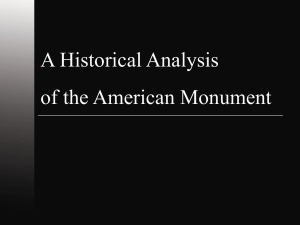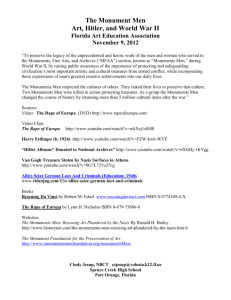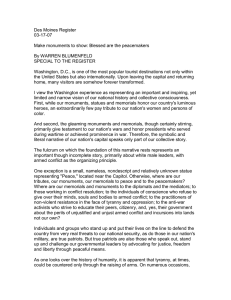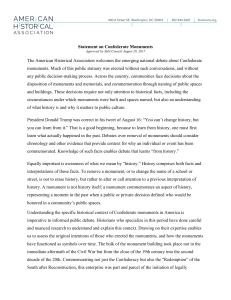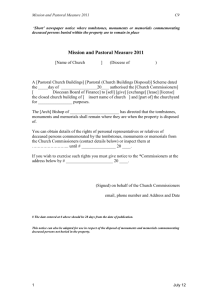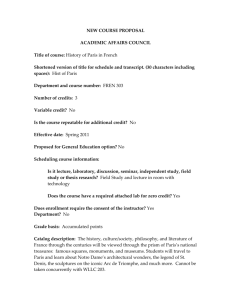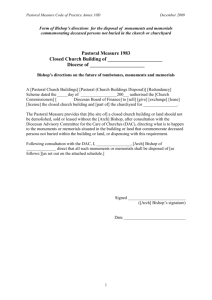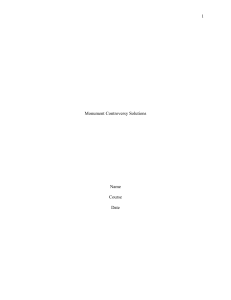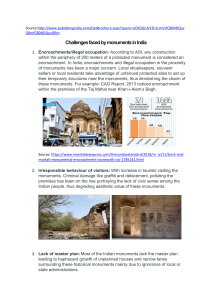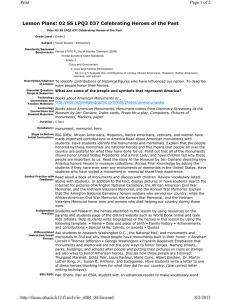Monuments and Memorials
advertisement
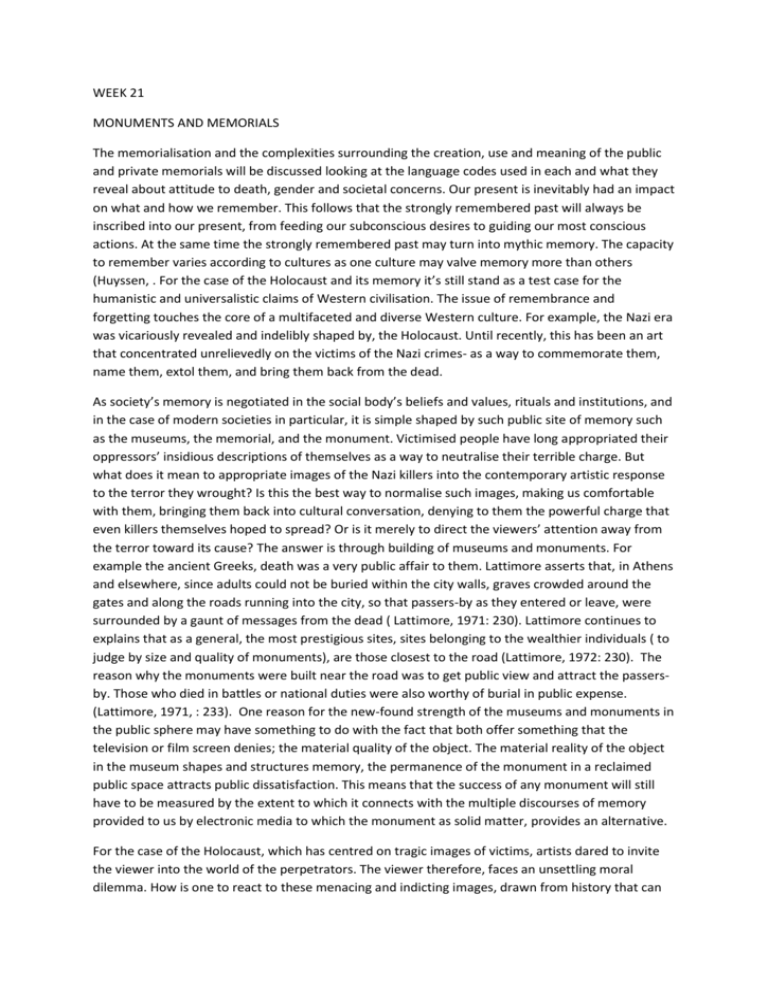
WEEK 21 MONUMENTS AND MEMORIALS The memorialisation and the complexities surrounding the creation, use and meaning of the public and private memorials will be discussed looking at the language codes used in each and what they reveal about attitude to death, gender and societal concerns. Our present is inevitably had an impact on what and how we remember. This follows that the strongly remembered past will always be inscribed into our present, from feeding our subconscious desires to guiding our most conscious actions. At the same time the strongly remembered past may turn into mythic memory. The capacity to remember varies according to cultures as one culture may valve memory more than others (Huyssen, . For the case of the Holocaust and its memory it’s still stand as a test case for the humanistic and universalistic claims of Western civilisation. The issue of remembrance and forgetting touches the core of a multifaceted and diverse Western culture. For example, the Nazi era was vicariously revealed and indelibly shaped by, the Holocaust. Until recently, this has been an art that concentrated unrelievedly on the victims of the Nazi crimes- as a way to commemorate them, name them, extol them, and bring them back from the dead. As society’s memory is negotiated in the social body’s beliefs and values, rituals and institutions, and in the case of modern societies in particular, it is simple shaped by such public site of memory such as the museums, the memorial, and the monument. Victimised people have long appropriated their oppressors’ insidious descriptions of themselves as a way to neutralise their terrible charge. But what does it mean to appropriate images of the Nazi killers into the contemporary artistic response to the terror they wrought? Is this the best way to normalise such images, making us comfortable with them, bringing them back into cultural conversation, denying to them the powerful charge that even killers themselves hoped to spread? Or is it merely to direct the viewers’ attention away from the terror toward its cause? The answer is through building of museums and monuments. For example the ancient Greeks, death was a very public affair to them. Lattimore asserts that, in Athens and elsewhere, since adults could not be buried within the city walls, graves crowded around the gates and along the roads running into the city, so that passers-by as they entered or leave, were surrounded by a gaunt of messages from the dead ( Lattimore, 1971: 230). Lattimore continues to explains that as a general, the most prestigious sites, sites belonging to the wealthier individuals ( to judge by size and quality of monuments), are those closest to the road (Lattimore, 1972: 230). The reason why the monuments were built near the road was to get public view and attract the passersby. Those who died in battles or national duties were also worthy of burial in public expense. (Lattimore, 1971, : 233). One reason for the new-found strength of the museums and monuments in the public sphere may have something to do with the fact that both offer something that the television or film screen denies; the material quality of the object. The material reality of the object in the museum shapes and structures memory, the permanence of the monument in a reclaimed public space attracts public dissatisfaction. This means that the success of any monument will still have to be measured by the extent to which it connects with the multiple discourses of memory provided to us by electronic media to which the monument as solid matter, provides an alternative. For the case of the Holocaust, which has centred on tragic images of victims, artists dared to invite the viewer into the world of the perpetrators. The viewer therefore, faces an unsettling moral dilemma. How is one to react to these menacing and indicting images, drawn from history that can never be forgotten? Some critics claimed that museums and memorial’s culture of recent years have betrayed the real sense of history and turned it to a spectacle entertainment, thus giving only a post modern gloss and destroying any real sense, present and future rather than nurturing it. REFERENCE 1. Burton, D. 2003. Public memorials, private vitues: women on classical Athenian grave monuments. Victoria University of Wellington Press: New Zeaand. Morality, Vol.8, No. 1, 2003. 2. Huyssen, A. 1994. Monuments and memorialisation in a Post modern age. In the Art of Memory: Holocaust Memorials in history, Young, James(ed). 1994. 9-18.

